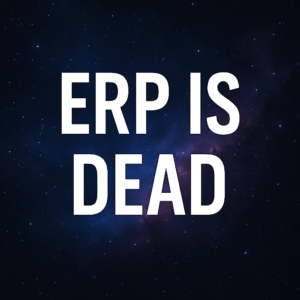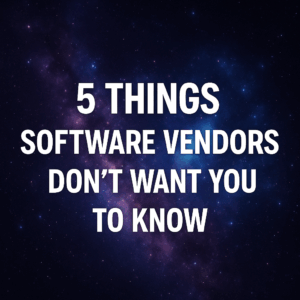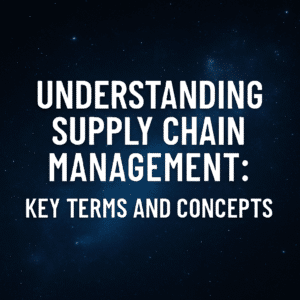The aerospace and defense industry is relatively complex, however presents a huge opportunity for automation and digitization. In taking the unique aspects and high growth of the aerospace community into consideration, I have identified the top 10 ERP systems for this emerging industry.
Aerospace and defense companies’ complexity constitutes unique needs. They are highly regulated and require intensive project management, raw materials, quality controls, shop floor automation, and more.
Specialized ERP systems do exist, however, not all are created equal. We will talk about our independent ranking of top 10 systems for roles played within the aerospace and defense, whether a manufacturer, contractor, tier one, tier two, or tier three supplier.
So let’s blast off…
Table of Contents
Toggle10. SAP S/4HANA
Number 10 is SAP S/4HANA, which is the largest ERP vendor in the marketplace, but when it comes to aerospace and defense, SAP is actually not the strongest. However, if you are a large organization with thousands of employees and locations throughout the world, SAP S/4HANA might place much higher on your list. For the average mid-size organization, other systems can accomplish the same things like SAP, probably better, and certainly at a lower cost and level of complexity.
All that being said, SAP S/4HANA is an established and robust system that can process a lot of the aspects required by aerospace and defense companies. It handles project management and some of the regulatory needs. It also addresses the engineering and the engineer-to-order aspect of the products, back-end financials, and reporting – which is an area that SAP excels at. SAP S/4HANA is a suitable choice for organizations that value these characteristics.

9. IQMS
Number nine is IQMS. This product focuses exclusively on manufacturing and distribution organizations. It has a large A&D customer segment. IQMS is in our top 10 because, in addition to being focused, it is also scalable and can handle compound requirements. It also has good reporting capabilities.
The product’s downsides, however, include the cost and useability. As always though, it the focused scope is the main value, then the net cost is not that high. Although reporting is the strength of the product, it can be difficult to set it up.
Finally, some of the upgrades and changes to the software are slow and not as frequent as some other vendors on our list. I would add one final note, which is, if you are a larger multifaceted organization, IQMS is probably not one that you would want to consider. With these strengths of weaknesses IQMS lands at number nine.
8. SYSPRO
Number eight is SYSPRO, another product focused on manufacturers and A&D manufacturers in particular. The product strengths include the ease to use, user interface, software setup, and implementations that are typically fast and comparatively at a lower cost. Moreover, it is known for its excellent customer support that is partially because it is smaller than other vendors, thus providing focused support.
SYSPRO’s downside is that it might be too lean for those larger, multipart organizations. However, it might be a good choice for a smaller mid-size organization.
Other downsides of the product include the search function, which tends to be difficult despite the intuitive user interface of the systems compared to others in our top 10 list. In addition, customers and clients have complained about downtime due to data checks. This is another risk to think about, but in general, SYSPRO lands at number eight on our list.
7. Oracle ERP Cloud
Number seven is Oracle ERP Cloud, a tier-one system that often competes with SAP S/4HANA, and sometimes even Microsoft Dynamics. Oracle ERP Cloud has a lot of the capabilities that A&D manufacturers look for, aspects like engineering modules, configure price quotes, project management, and all the required MRP and manufacturing types of capabilities. In addition, it is one of the most flexible products on our list, even though it is one of the larger complex systems.
The downsides of Oracle ERP Cloud include its lack of maturity compared to other systems that have been longer in the cloud. In addition, if you are a smaller mid-size organization, Oracle ERP Cloud might be overkill, too complex, costly, risky, and too much heartburn in terms of implementation. Those are some of the risks to be aware of. This lands Oracle ERP Cloud at number seven on our list.

6. Acumatica
Number six on our list is Acumatica, a newer ERP vendor that has been around for about 10 years. Acumatica is in our top 10 list because of its focus on manufacturing, in particular, A&D manufacturers. It is an end-to-end solution that provides a lot of flexibility for organizations that have diverse or changing needs. These are some of its strengths in addition to being a product that is highly customizable for organizations that have different needs.
Some of the product’s weaknesses include its inadequacy inclination for large organizations, it tends to slow down the system when processing a large amount of data, it is also known to have a steeper learning curve than some other systems. The dashboards are somewhat harder to set up, so it might not be the best if you need a variety of reports, dashboards, and analytics. With these pros and cons, Acumatica lands at number six on our list.
5. Sage X3
Number five is Sage X3, a vendor that focuses on small and mid-market manufacturing, as well as other industries, but they are well known in the manufacturing and A&D space. In addition to being a focus solution, Sage also provides strong reporting capabilities, and its flexibility can handle multiple entities. Some of Sage’s downsides include the additional customization required by the add-ons to attain the functionality you might be looking for.
In addition, some organizations and teams within these organizations can be overwhelmed by the use of the system, especially when moving from a very simple QuickBooks or an Excel-based work environment.
Finally, Sage is not the most scalable system on our list. Therefore, as it may not be fit for large organizations, but is certainly worth considering for smaller mid-size organizations. That is enough to land Sage X3 at number five on our list.
4. Microsoft Dynamics 365
Number four is Microsoft Dynamics 365, which is the third of the biggest ERP vendors in addition to SAP and Oracle, and it ranks the highest. Microsoft D365 is a good fit for aerospace and defense because it handles project management, different types of manufacturing, make-to-order types of manufacturers, and more requirements to support an A&D organization. In addition, it is flexible, adaptable, provides an open architecture, and is capable to change and integrate the software with other solutions.
Microsoft D365 downsides include its complexity and costly implementation, in addition to, probably the biggest downside, its implementation ecosystem. The resellers, VARS, and system integrators that focus on D365 are not really monitored carefully by Microsoft. Therefore, you might want someone that understands your industry, which is as important, if not more important to find the best VAR and system integrator that fits your organization than choosing D365. This lands Microsoft D365 at number four on our list.

3. Epicor
Number three is Epicor, a product that has been around for a long time, but their most recent version of Kinetic is a refresh of the technology. It is a system that can be deployed either on-premise or in the cloud. Epicor tends to focus and excel at manufacturing, especially make-to-order, and engineer-to-order types of manufacturers. It is also a system that is very flexible, but nimble. It does not try to be everything to everyone.
Epicor’s downsides include the difficult setting-up of the reporting and dashboards. It also tends to be slow compared to some other systems in the marketplace. It gets bogged down with lots of transactions and higher volume. With all of that, Epicor lands at number three on our list.

2. IFS
Number two is IFS, a European-based ERP vendor that focuses largely on manufacturing and A&D. Being a nontraditional manufacturing solution, it handles several requirements outside the realm of normal manufacturing.
Its strengths are project management, asset management, field services, engineering, and make-to-order types of manufacturing. IFS is not trying to be everything to everyone, instead, it is fairly focused. However, it has a very large vendor with a revenue of about a billion dollars and still growing quickly.
IFS’s downsides include the limited up-scaling, which means that large complex diverse organizations may outgrow it. Nevertheless, it can scale and keep up with the needs of most organizations in the mid-market. IFS lacks that ecosystem built out as far as it concerns implementation partners.
Finally, IFS is known to take time to set up and can be more complex to configure. For more information about IFS, I encourage you to check out my review below.
1. Infor CloudSuite
The top spot on our list is Infor CloudSuite. This package is sort of an umbrella that includes two legacy products, LN and SyteLine. Infor CloudSuite suite of products can handle various complex needs of A&D organizations and focus on manufacturing in particular. It also excels at engineer-to-order, make-to-order types of organizations, and supply chain management. Especially when you throw in Infor Nexus, which is another product they provide that specializes in supply chain management and vendor management.
Infor CloudSuite is a great fit for large dispersed complex A&D manufacturers. Infor CloudSuite’s downsides start with the product being overkill for some small organizations. Moreover, the products are still fragmented and lack a unified flagship product, although they are trying to tie together bits and pieces of other products they acquired over the years. Therefore, if you can patch together and find a way to navigate through, it can be a very good fit.
Finally, Infor can have a higher ongoing subscription cost than other systems, however, some of that price discrepancy can oftentimes be negotiated away. If you are looking for additional details on the pros and cons of Infor CloudSuite, I encourage you to check out the video on my YouTube channel which is featured below. The video reviews the product in greater detail. But these quickly reviewed pros and cons are enough to land Infor CloudSuite at number one on our list.

Resources
These are the top 10 systems you should be considering, which might be shuffled or different based on your needs and requirements. I advise you to really think through what your business requirements are as part of your evaluation.
To help you through the evaluation process, I encourage you to download the 2021 Digital Transformation Report. This includes rankings and ratings of all different types of systems. It also includes independent best practices for how to make your transformation more successful.
I hope you found this information useful and if you have questions regarding this top 10 Aerospace and Defense ERP system list, please don’t hesitate to reach out to me directly. I am happy to be an informal sounding board as you move through your digital transformation journey.






